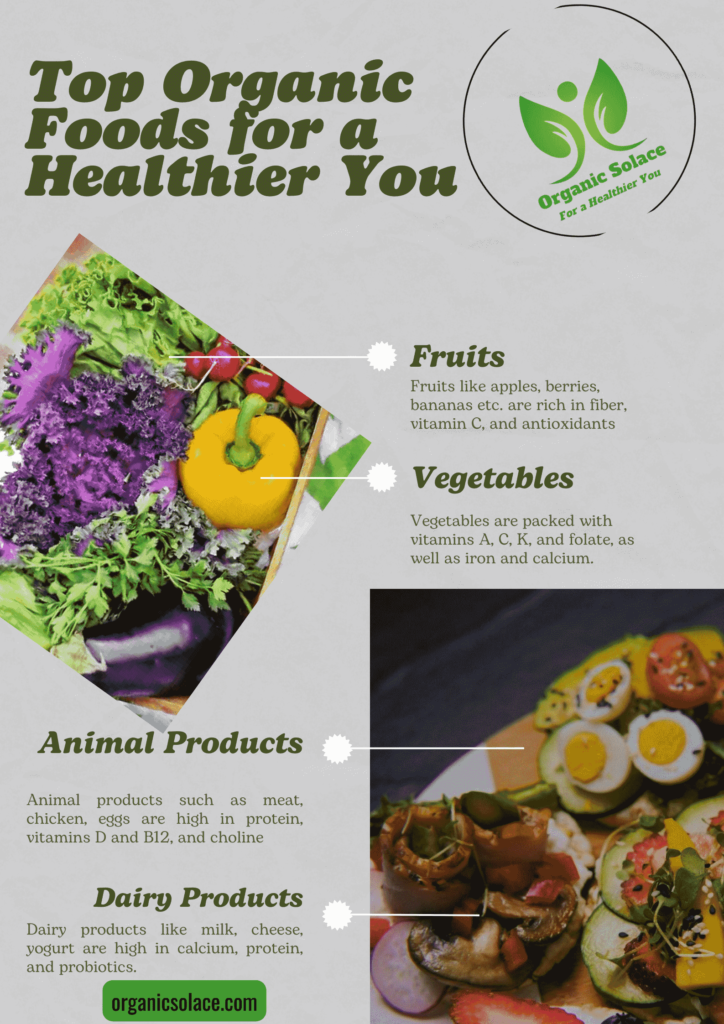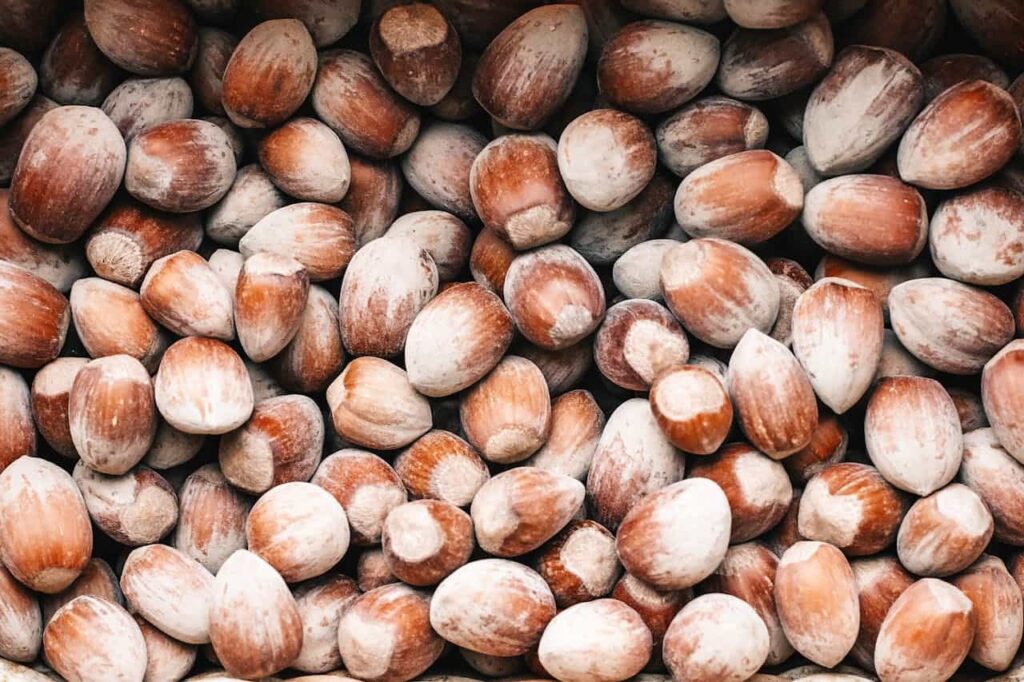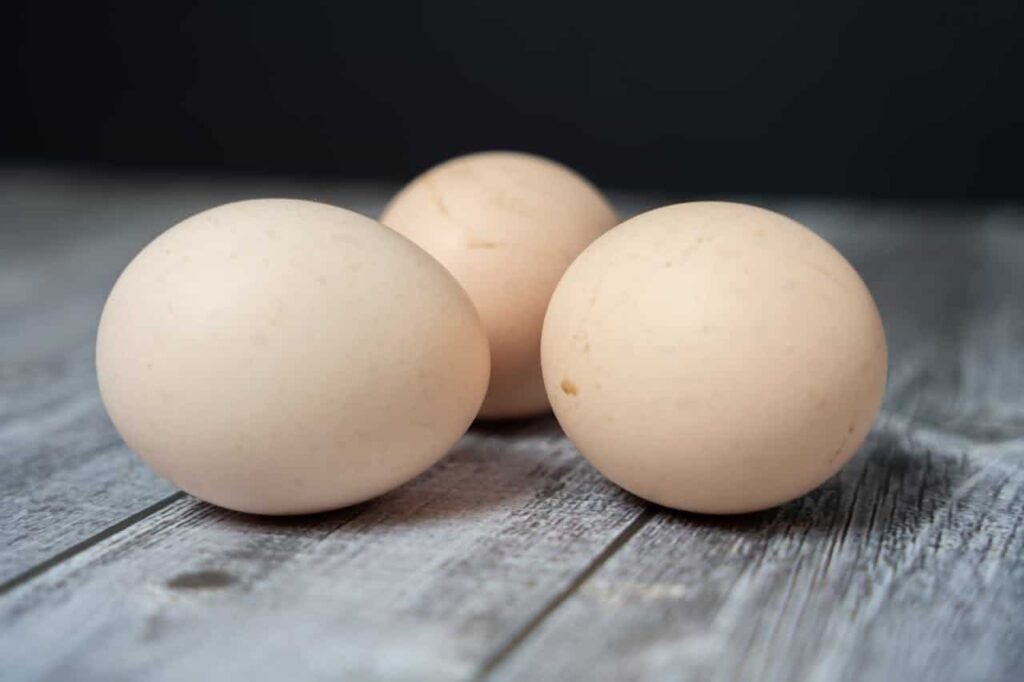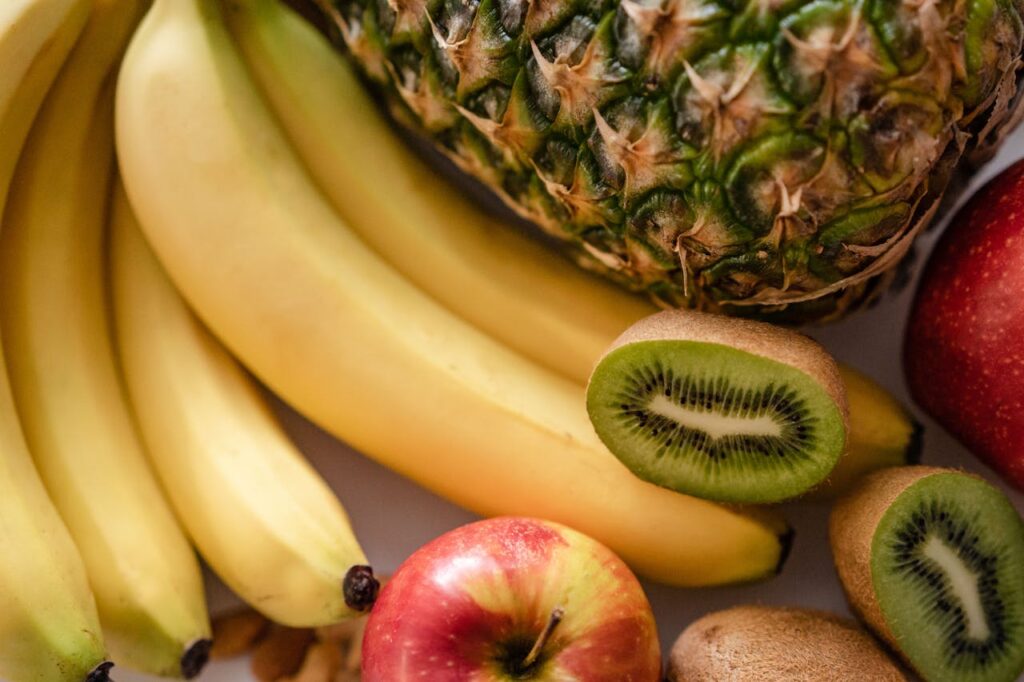Embracing a healthier lifestyle often begins with making informed food choices, and organic foods are an excellent place to start. The ancient Indians believed that the key to living 100 years of robust, healthy, joyful, and creative lives, or “jivem shardah shatam,” is to live in complete harmony with both nature and life’s spiritual inheritance. Maintaining your health is mostly dependent on your lifestyle.
Our bodies are designed with an overall state of health in mind, and we adhere to rigid rules and routines to keep ourselves physically healthy. Eating natural and whole foods, as well as making a commitment to abstain from foods heavy in fat and oil, is a vital component of maintaining our overall health (1). Including organic food items in your diet is one way to do this.
People are becoming more and more disenchanted with industrially produced food items due to nutritional scandals, which have resulted in a growing demand for organic goods. Consumers are becoming more health conscious and have changed the way they eat. Many consider that organic foods are safer and contain more of the nutrients needed to be healthy.
What is organic food?
Organic food refers to food products that are produced, processed, and handled according to specific standards set by certifying bodies, which vary by country.
They are more nutrient-dense and natural since they are produced without the use of artificial fertilizers, pesticides, or genetically modified organisms (GMOs). Discussed below are some of the top ten organic foods you can choose from for a healthier lifestyle.

Top organic foods
1. Organic vegetables and fruits
Eating fruits and vegetables is vital for maintaining a healthy diet, and opting for organic varieties guarantees that the food you eat is devoid of contaminants. Most research comparing the polyphenol content of plant products from various farming systems showed that organic fruits and vegetables had a considerable benefit.
The primary focus is on flavonoids, a broad class of several thousand distinct chemicals that are essential for maintaining health and carrying out a variety of bodily tasks. Flavonoids have potent antioxidant as well as metal-chelating properties.

Organic vegetables
Fruits and vegetables additionally contribute to the neutralization of free radicals by, for example, preventing the growth of cancer, preventing atherosclerosis, lowering the likelihood of obesity, strengthening blood vessel walls to avoid micro-bleeding and stroke, and lowering the danger of blood clot formation.
Why they are important
They boost the efficacy of vitamin C by acting as protectors, bolstering the immune system, and warding against some viral and bacterial illnesses; some possess astringent qualities that relieve mucous membrane irritation.
Carotenoids are another class of plant secondary metabolites that are distinguished by their potent antioxidant capabilities. The more than 600 pigments in nature known as carotenoids are what give plants their yellow, red, and orange hues.
Green leafy vegetables also contain carotenoids; however, the green chlorophyll obscures their color. Beta-carotene, the most well-known carotenoid, is present in a variety of yellow and orange fruits as well as leafy green vegetables.
Beta-carotene, the most well-known carotenoid, is present in a variety of yellow and orange fruits as well as leafy green vegetables. Tomatoes get their vibrant red color from lycopene. Zeaxanthin and lutein give corn its yellow color. Carotenoids are crucial to maintaining human health.
They have a beneficial effect on the heart by lowering blood cholesterol levels. They support the body’s immune system, especially beta-carotene, which promotes the production of more lymphocytes. Because of their antioxidant qualities and ability to neutralize free radicals, they also have anti-tumor activity.
2. Organic Milk
Owing to its high nutritional content, milk, along with other dairy products, is vital to human nutrition. Milk is an excellent source of bioactive compounds that help prevent diabetes, hypertension, and atherosclerosis. Thus, consuming milk and other dairy products is a preventative step against diseases associated with a lifestyle.
Divergences in market milk quality with respect to the amount of biologically active substances it contains are the main cause of disagreements among researchers on its effects on human health.
Numerous factors affect the composition and quality of milk. First, there exists a genetic predisposition that is present in animal species and breeds. Present-day cow breeds are primarily the product of human selection, which aims to accommodate both the animal’s intended usage and the local environment. As a result, there is a great deal of variation in the yield of milk and its composition.
Physiological elements make up the second category of factors. The animal’s age and the stage of breastfeeding are the most crucial factors. As a cow ages, the content of several of its constituent parts gradually declines. The composition is independent of factors like oestrousness or pregnancy; the only thing that is dependent on them is the milk supply of a cow in that particular stage.
Why they are important
Organic milk offers more security year-round and has a higher nutritional value than conventional milk. This is mainly because organic farming is prohibited from using chemical-based pesticides. In conventional dairy farming, all the pesticides are allowed to be used for plant protection.

Organic milk
Both milk processors and customers can determine the quality of the product based on its chemical composition. Whereas a high-fat level is necessary for the manufacturing of butter, the presence of protein is vital for the making of cheese.
Because beta-carotene intensifies butter color, it is also taken into account when evaluating technological quality. The antioxidant content of various dairy products is crucial in preventing unwanted losses brought on by excessive fat oxidation.
Milk’s dry matter is mostly made up of peptides and proteins. Casein makes up the majority of these substances (80%), facilitating the development of clots and the digestion and transfer of calcium and phosphorus in the gut. Some other vital nutrients in milk include fatty acids, vitamins, and minerals.
3. Grains
Due to their widespread use, cereals are an essential component of human nutrition and can offer a variety of nutrients as well as biologically active substances.
Epidemiological statistics suggest that frequent consumption of whole-grain and bran products can help prevent diabetes, cardiovascular disease, and some types of cancer, particularly those that affect the digestive system. Micronutrients, dietary fiber, and bioactive secondary metabolites in grains are typically linked to positive health outcomes.
Nutritional content
One study found that the total phenolic acid content of spring and winter wheat grown organically was substantially higher than that of conventional wheat. The concentrations of grain minerals under conventional and organic management were also looked at. While conventional management significantly enhanced yields, it also decreased mycorrhizal fungal colonization.
Organic grain exhibited more Zn and Cu but lower Mn and P than conventional grain, although there were only minor differences in the amounts of N, K, Mg, Ca, S, and Fe in the grain.
Food’s nutritional value is mostly determined by how well-suited its composition is to the body’s needs. Research indicates that organic plant products often have higher levels of phenolic chemicals and vitamin C.

Grains
4. Meat
The lawful provision of rank standards applies to organic animal husbandry and its management techniques. The following are the tenets of organic livestock husbandry: animal breeding as well as maintaining conditions, feeding, and animal welfare.
Also, hormones, genetically modified organisms, and their byproducts are not used in the production of organic livestock—only antibiotics are used to save the lives of livestock in the absence of alternative therapeutic agents.
Feed is prepared per guidelines for organic crop production, which employ natural composting materials (compost, manure), green manures, as well as biological plant protection products in place of pesticides and artificial fertilizers. Organic raw materials are processed without the addition of artificial coloring or preservatives by employing techniques that preserve their nutritional content.
Nutritional content
Research has demonstrated that ruminant meat has a significantly lower ratio of polyunsaturated fatty acids (omega-6: omega-3) than other types of meat, making it particularly desirable. One of the most significant factors influencing nutritional value is the makeup of fatty acids.
Before modern times, beef was inherently high in n-3 acids, which have anti-inflammatory benefits and lower the risk of heart attack, and cancers of the breast, prostate, and colon. These days, the ratio may reach 1: 30 because animal feed is produced industrially using a variety of cereals, including n-6 acids. The amounts of n-6 fatty acids are noticeably larger than those of n-3 acids.
Positive quality attributes, such as a favorable fatty acid ratio with a higher concentration of omega-3 and a lower concentration of saturated fatty acids, are characteristic of meat from organic farms.
The nutrient content of meat is significantly higher when fresh green pasture forage predominates in the feed regimens. This is one of the main factors determining the level of bioactive compounds in meat.

Organic meat
5. Organic Eggs
Eggs have played a significant role in human nutrition for millennia. Because of their numerous useful qualities, including their ability to contain water, emulsify, and froth, eggs have evolved into a staple ingredient in many different cuisines over time.
It can be said that eggs are a great source of high-quality essential nutrients for the human body, including proteins, cholesterol, fatty acids, vital amino acids, vitamins, and minerals.
Nutritional content
The major goal of the laying hen is to create new life rather than produce high-value food for humans. Consequently, the building blocks of life are found in eggs, and several of the substances within have what is known as biological activity.
As a result, eggs are excellent candidates as raw materials for the conventional food and pharmaceutical sectors, as well as for diets that are meant to promote health.
It is possible to maintain layers across systems. The battery cage technique, in which layers stay in cages and are unable to walk about freely, is used for most egg production. The hens in barn systems are not housed in cages; instead, they have freedom and room to roam about, stretch, and exercise inside the structure.
Similar to barn systems, free-range hens are housed in structures, but during the day, they need to always have exposure to an outdoor space with enough vegetation.
The way that the birds are kept, fed, and cared for varies throughout systems. Numerous research studies have examined the impact of various housing methods on egg quality. According to certain research, the chickens’ diet and husbandry practices can have a big impact on the quality of their eggs.

Eggs
The yolk of an organic egg is significantly darker than that of a conventional egg due to signs of a distinct carotenoid composition in the organic egg. The findings are uneven, although there is a propensity for the fatty acid characteristics, vitamin content, as well as cholesterol levels to differ between organic and conventional eggs.
6. Organic seeds and nuts
Seeds and nuts are a fantastic complement to a balanced diet because they are nutrient-dense. Choosing organic nuts and seeds guarantees that the food you eat doesn’t include any artificial pesticides or genetically modified organisms.
Nuts like organic almonds, chia seeds, flaxseeds, and pumpkin seeds are well-liked options that can be eaten on their own as a snack or combined with other foods.
It’s a common misconception that organic dried nuts can’t be classified as organic if they include anything else, like the dried nut. But this presumption is untrue. But this is not the case. Even after being processed with additional organic components at a facility certified as organic, dried nuts are still regarded as organic.
7. Organic drinks
You could get overwhelmed by the variety of drinks available today. People find it challenging to choose the best product lines, tastes, and benefit plans (health or corporate) when faced with a plethora of options. By satisfying both of those demands, the organic market is expanding in line with consumer preferences and rising at a rapid rate.
Natural beverages don’t include extraneous ingredients or processing, but organic drinks adhere to strict standards for the techniques employed in production. Only goods with a minimum of 95% certified organic content are allowed to use the organic label in the US.
Drinks that are natural or organic provide consumers with more nutritional options that are health-conscious and devoid of undesirable ingredients, including artificial dyes, genetically modified organisms, pesticides, and excessive sugar. Not surprisingly, these drinks are becoming more popular as consumers become more health-conscious.
Organic drinks are more than just a beverage; they are healthful and curative. The variety of additives found in non-organic foods, such as sugar, artificial flavors, as well as preservatives manufactured by humans, can give them a decent taste without any health advantages. On the other hand, customers enjoy the superior taste of organic drinks due to their original yet fresh flavors.

Organic drinks
8. Fish
When it comes to farmed fish, going organic means adhering to certain guidelines regarding water recycling, waste disposal, and feed. The fish can only be fed food that has been approved as organic.
Since there is certified vegetarian food available, this is not an issue for fish like tilapia, which is vegetarian. But that’s not the case with carnivorous fish, like salmon.
Purchasing only wild fish from sustainably farmed waters is the best way to guarantee that the fish you purchase is devoid of antibiotics. If you’re seeking the benefits of organic food, which include being chemical- and antibiotic-free, environmentally responsible, free-range, and sustainable, go for wild-caught fish and avoid “organic” farmed fish.

Fish
9. Fats and oils
Similar to carbohydrates, fats and oils are organic substances made up of molecules consisting of carbon (C), hydrogen (H), and oxygen (O). There are many different kinds of fats and oils, as well as various words and ideas related to them.
Nutritional content
Although oils are heavy in calories, they are a valuable source of nutrients, including vitamin E. Depending on their degree of activity, older folks can have anything from 5 to 8 tablespoons of oils per day. Oils are a good source of monounsaturated and polyunsaturated fats, which aid in energy production and the body’s absorption of certain vitamins.
It can be challenging to measure the oils you use every day because, although oil is added to some dishes naturally, it’s not always the case when baking or cooking.
Generally, attempt to use oils rather than solid fats that are high in saturated fat, like butter or lard. Some meals, including baked pastries and potato chips, naturally contain saturated fats, but they are often added to other foods.
For those who would like to incorporate more organic items into their cuisine, organic coconut oil, olive oil, apple cider vinegar, as well as balsamic vinegar are great options.
10. Organic baby food
It’s not always easy for new mothers to find the time to prepare baby food from scratch. It might be much more difficult when you also have to satisfy fussy diners. Convenience shouldn’t have to come at the expense of quality, though, and a growing number of pre-made baby food companies are offering high-quality organic blends without sacrificing flavor or nutrition.
Organic baby formula is produced with no use of chemical pesticides, genetically modified organisms (GMOs), synthetic flavors or hues, preservatives, or hormones.
Pureed-textured foods are offered to babies by certain households following the conventional spoon-feeding method, whereas baby-driven weaning or a blend of the two feeding approaches are selected by others.
Besides deciding whether to use organic or non-organic food, there are other considerations when feeding a baby. In the end, it’s critical to keep in mind that your children should have access to a varied range of vegetables, fruits, whole grains, as well as proteins, whether they are conventional or organic.

Baby food
Conclusion
Incorporating organic foods into your diet is a great step towards a healthier lifestyle. These top 10 organic foods provide a range of essential nutrients, promote overall well-being, and support sustainable and environmentally friendly farming practices.
By making organic foods a staple in your diet, you can enjoy their health benefits while contributing to a more sustainable food system.
Using organic raw materials is vital when designing a healthy diet or creating functional foods since they include more bioactive chemicals that support human metabolism and immune system resilience. Eating organic food can also help prevent health issues brought on by inadequate nutrition or unhealthy foods.
References
1. Maitya T, Saxenab A, Rajua PS, Bawaa AS. Organic foods: Healthier way of living. Indian food industry. 2010 Jul;29(4):18.



Pingback: The Organic Revolution: How Tajín Seasoning Enhances Flavor Naturally - Organic Solace
Pingback: The Ultimate Guide to The Best Organic Meat Dog Food in 2024
Pingback: 6 COMMON MISCONCEPTIONS REGARDING ORGANIC FOODS